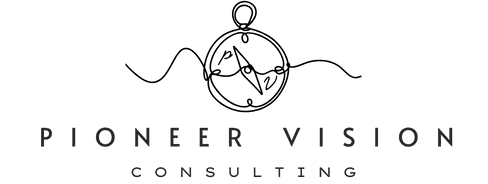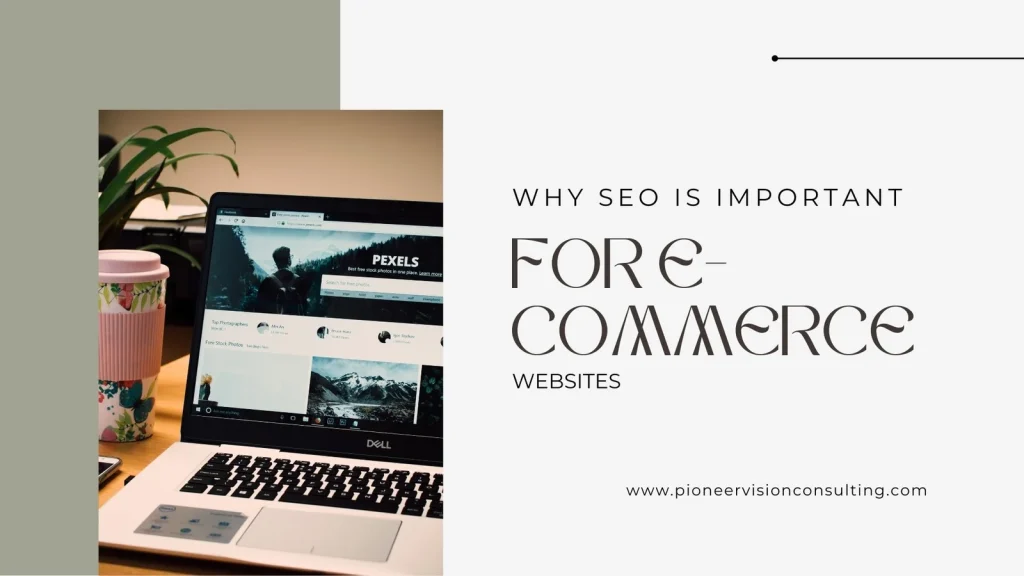Are you struggling to find effective ways to boost your online sales? Research shows that 93% of online experiences begin with a search engine. This highlights the critical need for strong search engine optimization (SEO) for e-commerce websites. In this post, I will cover the essential role of SEO in driving traffic to your site, the key benefits it brings to online retailers, and the technical aspects you must not overlook. By understanding these insights, you’ll be better equipped to enhance your site’s visibility and increase your sales.
Key Takeaways
- SEO is essential for boosting online sales and enhancing brand visibility
- Optimizing website speed significantly improves user experience and conversion rates
- Effective link building increases search visibility and drives relevant organic traffic
- High-quality content fosters customer trust and strengthens brand authority
- Analyzing user behavior helps refine strategies for better engagement and conversions
Understand the Role of SEO in E-Commerce Success
Search visibility significantly influences online sales growth, making SEO a vital component of e-commerce success. In this section, I will identify how effective link building strategies enhance brand recognition and drive organic traffic. I will also analyze how this traffic boosts conversion rates, ultimately underscoring the power of digital marketing in e-commerce.
Identify How Search Visibility Drives Online Sales Growth
Search visibility is a key driver of online sales growth. When I optimize website content, such as product descriptions and images using the alt attribute, I enhance the user experience while also making the site more appealing to search engine algorithms.
This optimization is critical because it helps increase the site’s PageRank, making it more likely for my target audience to find my products when they search online.
Understanding how search visibility impacts sales can transform an e-commerce strategy. I often analyze how visitors interact with my site, ensuring I meet the needs of my target audience.
By focusing on relevant keywords and maintaining a strong site structure, I can improve user experience, ultimately leading to higher conversion rates as more potential customers discover my offerings through search engines.
Examine Key SEO Strategies for E-Commerce Platforms
To effectively enhance the visibility of my e-commerce platform, I prioritize several key SEO strategies. One approach involves optimizing my web pages by ensuring they are accessible to all users, including those with disabilities.
I also focus on using descriptive anchor text that accurately reflects the content of linked pages, which not only aids in navigation but also encourages better engagement from my audience.
Using analytics tools, I can track visitor behavior to understand which aspects of my SEO strategy are working and which need improvement. For instance, I regularly review the performance of blog posts that drive traffic to my site, identifying keywords that resonate with my target audience.
By making adjustments based on these insights, I continually refine my approach to SEO, ensuring my site remains competitive and user-friendly:
| SEO Strategy | Description |
|---|---|
| Accessibility | Ensuring web pages are usable for all, including those with disabilities. |
| Anchor Text | Using relevant text in links enhances both clarity and SEO. |
| Analytics | Tracking user interactions to inform SEO improvements. |
| Blog Posts | Creating targeted content that drives organic traffic to the site. |
Analyze the Impact of Organic Traffic on Conversion Rates
The impact of organic traffic on conversion rates is significant for any e-commerce business. When I focus on attracting visitors through long-tail keywords, I often see a higher engagement level compared to more generic terms.
Tailoring my marketing strategy by targeting specific search queries not only drives more relevant traffic but also enhances the likelihood of converting those visitors into customers.
Incorporating content marketing techniques, like guest blogging, plays an essential role in increasing my site’s visibility in organic search results. By creating valuable, targeted content that aligns with my audience’s interests, I can encourage potential customers to explore my offerings further, ultimately leading to better conversion rates. Understanding and implementing these tactics allows me to effectively turn organic visitors into loyal buyers:
- Utilizing long-tail keywords to attract targeted traffic.
- Employing content marketing to create relevant information.
- Leveraging guest blogs for increased visibility.
- Monitoring organic search results to refine strategies.
Discover Key Benefits of SEO for Online Retailers
In this section, I will highlight three key benefits of SEO for online retailers. I will explain how SEO enhances brand credibility in e-commerce, emphasizing practices like avoiding keyword stuffing and focusing on quality content.
I will also assess the long-term cost-effectiveness of SEO tactics compared to paid advertising and conduct a competitor analysis to illustrate how SEO improves visibility in search results.
Learn How SEO Enhances Brand Credibility in E-Commerce
Search engine optimization (SEO) significantly boosts brand credibility in e-commerce by prioritizing effective content creation and a reliable content management system. When I consistently produce high-quality content that addresses customer needs, my website naturally garners increased web traffic. This not only enhances user trust but also reinforces my brand’s authority, making potential customers more inclined to make purchases.
Implementing an SEO strategy is essential for maintaining a competitive edge in the online marketplace. By integrating relevant keywords and optimizing product descriptions, I ensure that my offerings stand out in search results, capturing the attention of visitors.
This strategy does not just improve visibility; it also cultivates a sense of reliability and professionalism, ultimately leading to stronger customer relationships and increased sales:
| Aspect | Benefits |
|---|---|
| Content Creation | Enhances customer engagement and establishes authority. |
| Content Management System | Streamlines website updates and optimizations. |
| Web Traffic | Increases visibility and opportunities for conversions. |
| Customer Trust | Builds reliability and encourages repeat purchases. |
| SEO Strategy | Drives targeted visitors and strengthens brand image. |
Assess the Long-Term Cost-Effectiveness of SEO Tactics
When I evaluate the long-term cost-effectiveness of SEO tactics for e-commerce, it becomes clear that investing in these strategies can significantly enhance brand awareness without incurring continuous expenses like paid advertising. Over time, the organic traffic generated through well-optimized landing pages brings sustainable growth.
This approach, which involves using relevant anchor texts and focusing on low bounce rates, allows my site to maintain visibility in search results, translating into higher customer retention and sales.
Moreover, understanding the effectiveness of SEO tactics over an extended period informs my marketing decisions. By analyzing which strategies yield the best results, I can refine my approach and allocate resources efficiently.
This iterative process strengthens my overall digital presence and builds a foundation for a reliable, cost-effective marketing strategy. As I continue to monitor performance metrics and optimize my content, I enhance both user experience and my site’s authority in the marketplace:
- Invest in SEO for sustainable brand awareness.
- Focus on optimizing landing pages for ideal user experiences.
- Utilize anchor texts to improve content navigation.
- Analyze data to reduce bounce rates and improve engagement.
Compare SEO With Paid Advertising for E-Commerce Visibility
When comparing SEO with paid advertising for e-commerce visibility, I find that SEO provides lasting benefits that enhance credibility and reduce long-term costs. While paid ads can generate immediate traffic, they often require continuous funding to maintain visibility.
In contrast, an effective SEO strategy involving quality web design and well-optimized metadata can lead to organic traffic that consistently grows over time, offering a better return on investment in the long run.
Moreover, I have experienced that SEO not only helps with lead generation but also establishes my brand as a trusted authority within my market. By focusing on creating relevant content and optimizing for relevant keywords, I attract visitors who are genuinely interested in my offerings.
This organic approach nurtures longer-lasting relationships with customers, as they come to associate my brand with reliability and expertise, ultimately resulting in more conversions without the recurring costs associated with paid campaigns.
Explore Technical SEO Essentials for E-Commerce Sites
To enhance e-commerce websites’ visibility, I focus on essential technical SEO practices. Optimizing website speed ensures better usability, keeping visitors engaged. Implementing structured data plays a crucial role in improving search rankings by enhancing product descriptions while preventing issues like duplicate content.
Additionally, addressing mobile responsiveness allows me to reach a wider audience effectively. Each of these elements significantly contributes to creating an SEO cost-effective strategy that boosts overall performance.
Optimize Website Speed for Better User Experience
Website speed plays a critical role in my SEO strategy for e-commerce sites, as it directly impacts user experience and domain authority. When pages load quickly, visitors are more likely to stay and explore my offerings, increasing the chances of conversion.
I have implemented techniques such as optimizing image sizes and utilizing content delivery networks to ensure that my website performs efficiently, which helps improve its relevance in search engine rankings.
Moreover, as I utilize generative artificial intelligence tools to analyze site performance, I can identify bottlenecks that may hinder speed. For instance, I noticed that visitors often abandoned their carts due to slow loading times; addressing this issue not only improved user retention but also enhanced overall customer satisfaction.
By refining the speed of my website, I have been able to create a seamless shopping experience that fosters customer loyalty and boosts my site’s visibility in search results.
Implement Structured Data to Improve Search Rankings
Implementing structured data is a fundamental aspect of my SEO strategy for e-commerce. This technique helps search engines better understand my website’s quality content, particularly when accessed from a mobile device.
By marking up product information, such as prices and availability, I enhance the visibility of my offerings in search results, making it easier for potential customers to find me.
Furthermore, conducting a regular audit of structured data ensures that all products are accurately represented, minimizing errors that could affect user experience.
An outreach strategy that includes sharing insights with others in the industry can also reinforce my knowledge of the best practices for structured data. This collaborative approach not only enhances my site’s appeal but also solidifies my brand’s authority online:
- Understand the importance of structured data for search rankings.
- Improve visibility with accurate product information.
- Regularly audit structured data for consistent results.
E-commerce sites should prioritize technical SEO aspects like site speed, mobile-friendliness, structured data for products, proper URL structure, and secure connections (HTTPS) to enhance visibility and provide users with a seamless shopping experience.
Address Mobile Responsiveness for a Wider Audience Reach
Addressing mobile responsiveness is essential for enhancing customer engagement and meeting user intent. I have noticed that an increasing number of visitors access e-commerce sites via smartphones and tablets.
By ensuring that my website is mobile-friendly, I not only improve the overall user experience but also boost my site’s compatibility with search algorithms, which tend to favor responsive designs in their ranking criteria.
In my experience, failure to optimize for mobile can lead to higher bounce rates, undermining the effectiveness of any link building campaign I undertake. Moreover, I often ensure to stay away from black hat techniques that can jeopardize my site’s standing in search results.
By focusing on mobile responsiveness, I effectively create a seamless shopping experience that encourages visitors to explore my offerings and ultimately convert into loyal customers.
Investigate the Influence of Content Marketing on SEO
Creating engaging product descriptions boosts my SEO efforts by improving user experience and search visibility. I also leverage blogs to drive traffic, which enhances my overall SEO strategy. Additionally, incorporating video content can significantly improve engagement and attract more visitors. Each of these elements plays a vital role in shaping my e-commerce landscape and optimizing my email marketing campaigns through strategic intelligence.
Create Engaging Product Descriptions That Boost SEO
Creating engaging product descriptions is a crucial strategy for enhancing SEO on my e-commerce website. By clearly highlighting the features and benefits of each product, I not only capture the interest of potential customers but also improve web visibility.
Incorporating relevant keywords naturally, such as those related to web development and social media, helps ensure that my descriptions resonate with search engines, ultimately driving more traffic to my site.
In my experience, adding a storytelling element to product descriptions fosters a connection with potential buyers, making them more likely to convert. I have found that linking to additional resources within my content, like newsletters or influencer endorsements, can also boost credibility and encourage engagement.
This approach not only aids in optimizing for search but also enriches the customer experience, establishing a more meaningful interaction with my brand.
Leverage Blogs to Drive Traffic and Enhance SEO Efforts
Leveraging blogs to drive traffic is a fundamental aspect of my SEO strategy for e-commerce websites. By producing content that targets relevant keywords, including those related to voice search, I enhance the site’s visibility in search engine results. Using web analytics, I monitor which topics resonate with my audience, allowing me to create engaging blog posts that not only attract visitors but also build my backlink profile over time, reinforcing authority in my niche.
Implementing a robust content management system enables me to consistently publish optimized blogs that address customer needs. I often focus on practical insights and solutions that site owners can apply to improve their strategies.
Each blog post serves as an opportunity to connect with my audience, establish credibility, and guide visitors through my offerings, ultimately enhancing their likelihood of conversion:
| Strategy | Description |
|---|---|
| Keyword Optimization | Using relevant search terms, including voice search keywords. |
| Web Analytics | Tracking performance to refine content and maximize engagement. |
| Backlink Building | Enhancing site authority through quality backlinks. |
| Content Management | Streamlining blog publication for consistent audience engagement. |
Use Video Content to Improve Engagement and Search Visibility
Incorporating video content has proven vital for enhancing engagement and improving search visibility on my e-commerce website. I create instructional videos and product showcases that act as reliable resources, allowing customers to better understand my offerings.
When potential buyers see the value of a product through visual demonstration, it builds trust, thereby enhancing my brand’s reputation and leading to increased revenue.
Furthermore, I prioritize sharing my videos on relevant directory websites and resource pages to reach a broader audience. This approach not only showcases my expertise but also increases backlinks to my site, further boosting my overall SEO strategy.
By consistently producing high-quality video content, I can effectively attract more visitors and convert them into loyal customers, addressing their needs while seamlessly integrating with my marketing efforts.
Evaluate Local SEO Impact on E-Commerce Success
In evaluating the impact of local SEO on e-commerce success, I focus on optimizing local listings to attract nearby consumers. Utilizing customer reviews plays a crucial role in improving local search results and enhancing customer satisfaction.
Additionally, I explore local backlinks as effective link building techniques to enhance visibility in the community, ultimately boosting my brand mentions and reinforcing my local authority.
Optimize Local Listings to Attract Nearby Customers
Optimizing local listings is essential for attracting nearby customers who may be searching for products or services I offer. By ensuring my business information is accurate and easily accessible, including my email address and point of sale details, I can enhance the overall customer experience. When potential customers find clear and consistent information about my offerings, their likelihood of engaging with my business increases, ultimately benefiting my search rankings.
Through my experience, I’ve noticed that local SEO can significantly influence customer behavior, especially when they are looking for businesses in their vicinity. By integrating my website with local listings and encouraging customer reviews, I not only improve visibility but also build credibility within my community.
This approach fosters trust, making it more likely that nearby customers will choose my business over competitors, positively impacting both conversion rates and customer loyalty.
Utilize Customer Reviews to Improve Local Search Results
Utilizing customer reviews can dramatically enhance local search results for my e-commerce business. Positive feedback not only boosts my brand’s reputation but also signals trustworthiness to search engines. When potential customers see high ratings linked to my domain name, they are more likely to choose my offerings over competitors, effectively aligning my services with the expectations of my target market.
Integrating reviews into my local SEO strategy is straightforward and impactful. I often encourage satisfied customers to leave reviews across various platforms, and I make it easy for them by providing direct links.
This practice increases my visibility in local searches and improves my search rankings on tools like Ahrefs while enhancing my overall customer service experience. To efficiently leverage reviews, I focus on these concepts:
- Consistently request feedback from customers.
- Highlight reviews on my website and social media.
- Monitor and respond to reviews to engage with my audience.
Explore Local Backlinks to Enhance Visibility in the Community
Building local backlinks is a crucial aspect of enhancing visibility within my community. By collaborating with local businesses and organizations, I can secure valuable backlinks that not only improve my site’s authority but also strengthen my relationships within the community.
For example, I often reach out via Help a Reporter Out (HARO) to share insights related to my niche, which can lead to local news coverage and relevant backlinks, further boosting my local SEO efforts.
These local backlinks can significantly impact my e-commerce site by directing traffic from within my area and building brand credibility. I’ve found that leveraging tools like Yoast can help analyze my backlink profile to ensure it meets best practices for local SEO.
By actively pursuing and maintaining strong local links, I position my e-commerce business to rank higher in local search results and build a solid connection with my target audience:
- Collaborate with local businesses for backlink opportunities.
- Utilize HARO to gain media coverage and relevant links.
- Analyze backlink profiles using tools like Yoast for better optimization.
- Maintain a strong local link presence to improve search visibility.
Analyze SEO Metrics to Measure E-Commerce Performance
To effectively measure e-commerce performance, I focus on three key areas: monitoring keyword rankings, evaluating user behavior through analytics, and using conversion tracking. By gauging SEO effectiveness through keyword positions, I can assess the success of my optimization efforts. Additionally, analyzing user interactions helps me understand audience engagement, while conversion tracking reveals the direct impact of my SEO initiatives on sales performance.
Monitor Keyword Rankings to Gauge SEO Effectiveness
Monitoring keyword rankings is crucial for assessing the effectiveness of my SEO strategies for my e-commerce website. By regularly tracking the positions of targeted keywords, I can quickly determine which optimization efforts are driving traffic and which areas require improvement. This process not only helps me understand how well my content aligns with user search intent but also provides insights into my competitive standing in the market.
For instance, when I notice fluctuations in keyword rankings, I immediately analyze potential causes, such as changes in search algorithms or shifts in consumer preferences. This proactive approach allows me to adapt my SEO tactics to maintain visibility and relevancy. Ultimately, consistent monitoring of keyword performance equips me with the information needed to make informed decisions, improve search engine rankings, and enhance overall sales for my e-commerce business.
Evaluate User Behavior Through Analytics and Insights
Evaluating user behavior through analytics provides vital insights into how visitors interact with my e-commerce website. I analyze metrics such as average session duration, pages per session, and bounce rates to understand user engagement levels. For instance, if I notice a high bounce rate on specific product pages, it signals a need for me to assess the content or layout and make necessary adjustments to retain visitors and enhance their shopping experience.
By utilizing tools like Google Analytics, I can also segment user data to understand the preferences of different customer groups. This information helps me tailor marketing strategies and product offerings to align with their interests, leading to better conversion rates. For example, if analytics reveal that users from a particular demographic navigate my site differently, I can optimize the user interface specifically for them:
| User Behavior Metric | Importance |
|---|---|
| Average Session Duration | Indicates how long visitors engage with my content. |
| Pages per Session | Reflects user interest and website navigation effectiveness. |
| Bounce Rate | Signals potential content or usability issues on landing pages. |
| Demographic Segmentation | Helps in tailoring strategies for targeted customer groups. |
Use Conversion Tracking to Assess the Impact of SEO Efforts
To effectively assess the impact of my SEO efforts, I utilize conversion tracking as a powerful tool. By monitoring how many visitors become customers, I can directly link my SEO strategies to sales performance. For example, I set up goals in Google Analytics to determine which keywords and pages contribute the most to my conversion rates, allowing me to refine my approach based on accurate data.
Understanding conversion rates helps me make informed decisions about my SEO strategy. If I notice that certain product pages are successful at converting visitors, I can analyze what elements contribute to this success, such as content quality or calls to action. By continually assessing and optimizing based on conversion tracking, I enhance my e-commerce website’s performance and ensure that my SEO efforts translate into tangible results.
Frequently Asked Questions
Why is SEO critical for the success of e-commerce websites?
SEO is essential for e-commerce websites as it enhances visibility, drives organic traffic, and improves user experience. Effective SEO strategies help attract potential customers and increase conversions, ultimately leading to sustained business growth and profitability.
What are the main benefits of SEO for online retailers?
SEO enhances online retailers’ visibility, driving organic traffic, improving user experience, and increasing conversion rates. By optimizing product pages and content, retailers can attract more customers and boost sales effectively.
How does content marketing influence e-commerce SEO efforts?
Content marketing enhances e-commerce SEO by creating valuable, relevant content that attracts organic traffic, increases user engagement, and improves visibility in search engines. This synergy boosts brand authority and drives conversions effectively.
What role does local SEO play in e-commerce success?
Local SEO boosts e-commerce success by enhancing visibility in local search results, attracting nearby customers, and increasing engagement through optimized listings and reviews. This targeted approach fosters trust and drives traffic to online stores.
Conclusion
SEO is essential for e-commerce success, driving organic traffic and boosting brand credibility in a competitive market. By optimizing website content and implementing effective strategies, I can enhance search visibility on google and improve conversion rates. Focusing on user experience and relevant keywords ensures that my offerings are easily discoverable, leading to sustainable growth. Ultimately, leveraging SEO empowers my e-commerce business to establish authority and nurture lasting customer relationships, underscoring its indispensable role in online retail.








